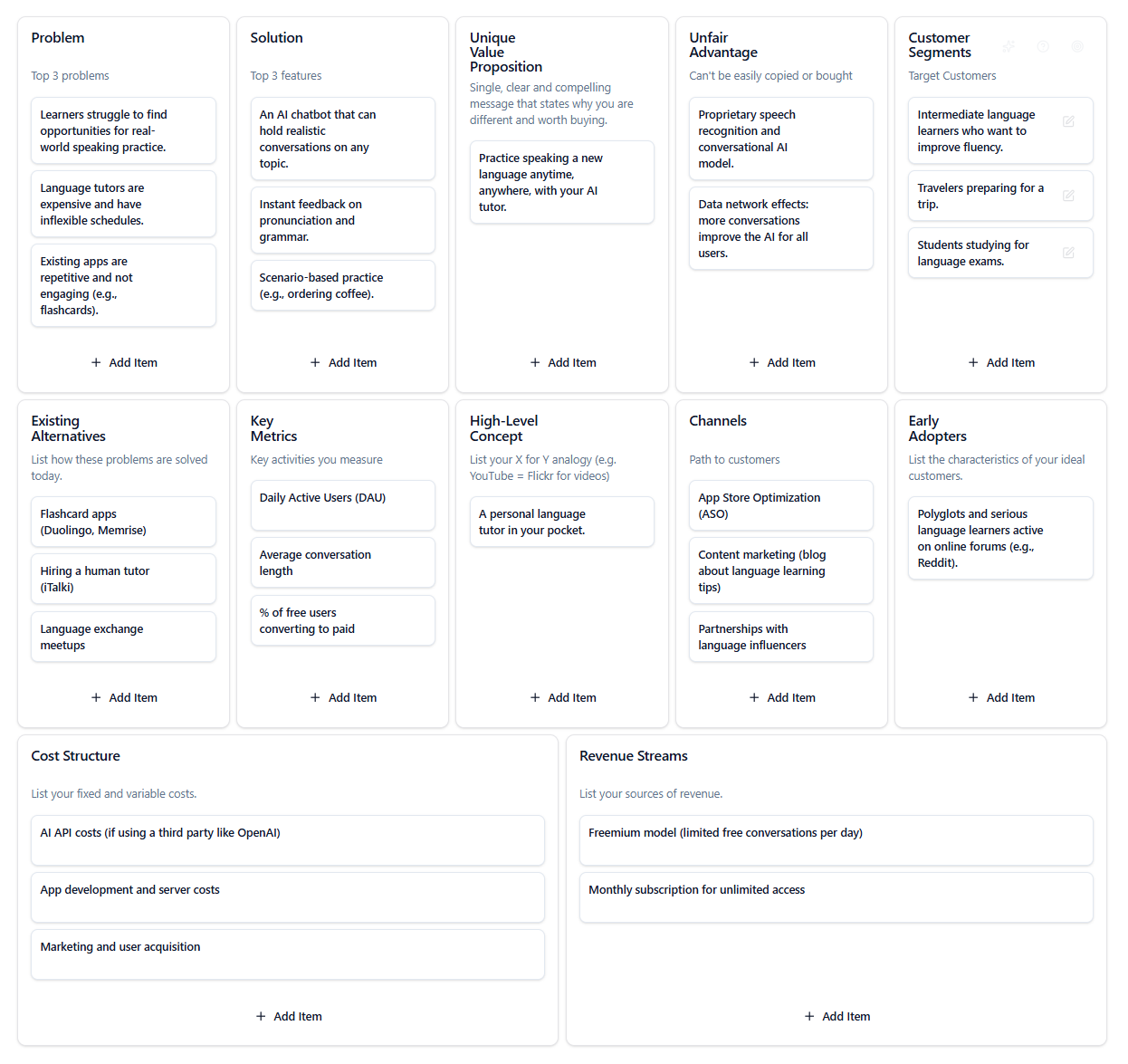Technology
AI Language Learning App
A mobile app that uses AI to create personalized, conversational practice for language learners.

Analysis & Interpretation
Background
The ‘AI Language Learning App’ tackles a significant pain point in the ed-tech space: the gap between knowing a language and speaking it confidently. This Lean Canvas proposes a technology-driven solution to make conversational practice accessible and affordable. This analysis dives into its technological moat and market positioning.
Key Strategic Insights
- Clear UVP and High-Level Concept: The ‘Unique Value Proposition’ (‘Practice speaking… anytime, anywhere’) and ‘High-Level Concept’ (‘A personal language tutor in your pocket’) are exceptionally clear and compelling, making the product’s purpose easy to grasp.
- Technology as the Unfair Advantage: The ‘Unfair Advantage’ is a ‘Proprietary AI model’ that improves with more data (‘Data network effects’). This is a powerful, scalable moat that gets stronger over time, unlike a simple feature that can be copied.
- Metrics Align with Value: The ‘Key Metrics’ (‘Average conversation length’, ‘DAU’) are well-chosen. They directly measure whether the core ‘Solution’ (holding realistic conversations) is delivering value and creating an engaging experience for the user.
Strategic Summary
The success of this business hinges almost entirely on the quality of its core technology. The riskiest assumption is that the AI is, or can become, good enough to be a viable substitute for human practice. The first step should be to build a Minimum Viable Product (MVP) and test it with the ‘Early Adopters’ (serious language learners) to validate the core solution’s effectiveness before investing heavily in marketing and user acquisition.
How It Was Built
This canvas demonstrates the practical use of our tool in developing a structured business model. Here is how it was done:

Idea Generation with AI
The AI Brainstorming tool generated several options for the Customer Segments and Revenue Streams, helping clarify where the business value lies.

Organizing the Layout
Colors separated key business areas for easier visualization, while tags grouped activities that contribute to similar goals.

Evaluating with AI Feedback
After completion, the AI Feedback function identified the Value Proposition section as an area needing deeper market validation.
Try It in the App
Load this canvas to see it in action. Modify elements, try new AI prompts, and refine the strategy to fit your own project vision.
